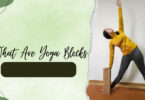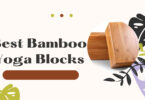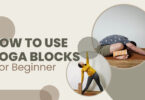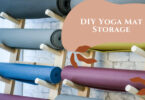The flooring of the yoga studio or at home is crucial to ensure a sturdy practice. It does not only decide the ambiance of your room, but also gives a proper support to your head, back, hands, and feet.
There are many types of yoga studio flooring available in the market. But not all of them are suited to your needs. To help you make a well-informed decision, we compiled a list of the different types of yoga flooring so that you can make an informed decision before making the purchase. But prior to this, you should know the primary things to keep in mind while looking for the perfect yoga flooring. Let’s begin!
What to Look For in A Good Yoga Flooring
Here are some of the essential factors to consider when looking for a good yoga flooring:
- It should be comfortable for long hours of standing, sitting, and lying down.
- Gives good traction to avoid slipping.
- Be durable enough to withstand regular use.
- Cushion the joints to prevent injuries.
- Be easy to clean and maintain.
Now that you’ve established your basics, let’s move on to the next section that describes the different yoga flooring materials.
Different Types of Yoga Flooring
There are many different types of yoga floors. But it mainly depends on which type of yoga does your studio will be used for and whether it’s a permanent place or not. Here are some top choices:
Cork Yoga Flooring
Cork yoga flooring has everything a yogi looks for in their studio. It is sound absorbent, gentle on the joints, humidity resistant, and has antimicrobial properties. If you like to play some upbeat music during the yoga practice, this is one of the best options available. Cork is a material that comes from the bark of the cork oak trees and is one of the most environmental-friendly choices for yoga studios.
Apart from being biodegradable, they are available in several different forms. You can install them as floating floors, in chevron patterns, and with simple adhesive to the subfloor.
The disadvantage of cork is that it needs to be fully water-sealed on the surface. Also, similar to hardwood, you will need to refine and burnish it regularly, which increases its maintenance cost.
Hardwood Yoga Flooring
If you seek a classy yoga flooring option, then hardwood is your answer. It has timeless beauty, durability, excellent air quality, and a barefoot-friendly surface; hardwood is the clear favorite among studio owners and yogis.
You can make this natural shock-absorbent material ant-skid with a suitable coating. The only downside of this material is its high maintenance requirements and its high cost. This is because trees like maple, pine, hickory, oak, and walnut are used to make them. Also, they often crack under high humidity due to wood swelling. This is why it is ideal for slow-moving asanas and meditation centers.
Bamboo Yoga Flooring
Bamboo is a sustainable and eco-friendly material that’s both durable and comfortable. Quality-wise, it is very similar to the hardwood floors in being dirt-resistant, shock-absorbent, hard-wearing, and non-allergic. The only drawback is that it is not as cushiony as cork or foam, so it is not ideal for people with joint pain.
However, it is very easy to maintain. First, you need a dry brush to push out the dirt and then clean it with a wet cloth. If you encounter any scratches, buff the discrepancy with mineral oil.
And the best part? You can use it for hot yoga as it doesn’t expand or shrink due to temperature fluctuations and humid conditions.
Rubber Yoga Flooring
Rubber may not be your first choice when it comes to deciding on the flooring of your yoga studio. This is because it is not very aesthetically pleasing. But, what it lacks in looks, it makes up in hygiene and moisture-resistance.
This flooring option is famously used in gyms and aerobics classes; thus, it is perfect for hot yoga studios. The top is made of hard and durable wood, while the bottom is made of soft, cushioning foam. Its moisture-lock technology comes from its tightly knit virgin rubber tiles that prevent the liquid from seeping in.
You don’t need a professional installation team to complete this flooring. All you need is some DIY tools and the exact measurements of the room.
Thermoplastic Material Yoga Flooring
Another excellent option for hot yoga studios is an anti-slip and odor-free flooring. Don’t worry about the sweaty sessions, the flooring is porous and thus doesn’t retain water on the surface.
The high-density thermoplastic material has the comfort of the rubber flooring but the hardness of a wood floor. This makes them perfect for providing support while flowing from one asana to another.
The flooring mats may be trimmed and customized to suit any space, and they don’t need to be secured to the subfloor with glue.
Floating Yoga Floors
A floating yoga floor is a type of flooring installation that joins together above the underlayment or the existing floor without adhesives or nails. These floors are perfect for yoga studios that are not permanent. They’re easy to install and remove, and they’re also slip-resistant and easy to clean.
Laminates, click-and-lock tiles, engineered wood, and vinyl flooring are popular materials used to make a floating surface. Since installing them doesn’t need any expertise, this can be your fun DIY project while setting up your beautiful yoga studio. In case of any damage, replace that particular unit, and you are good to go.
Marley Floors
Marley has a natural bounce that helps avoid bruising when the person is on all fours. This also acts as a shock absorber; thus, it is gentle on your joints. Marley formulations were initially designed to be non-slip vinyl, but they are now hybrid synthetics and available in various colors.
Its installation is easy; you can simply tape down the rolls of Marley. This is perfect for studio owners who don’t plan to stay there permanently.
Conclusion
Hopefully, this article gave you some clarity, but in the end, everything depends on your personal preference. Consider the atmosphere you want in your studio, the kind of yoga you will be teaching, and your budget. With so many materials available, surely you will find something that’s just perfect for your needs!







